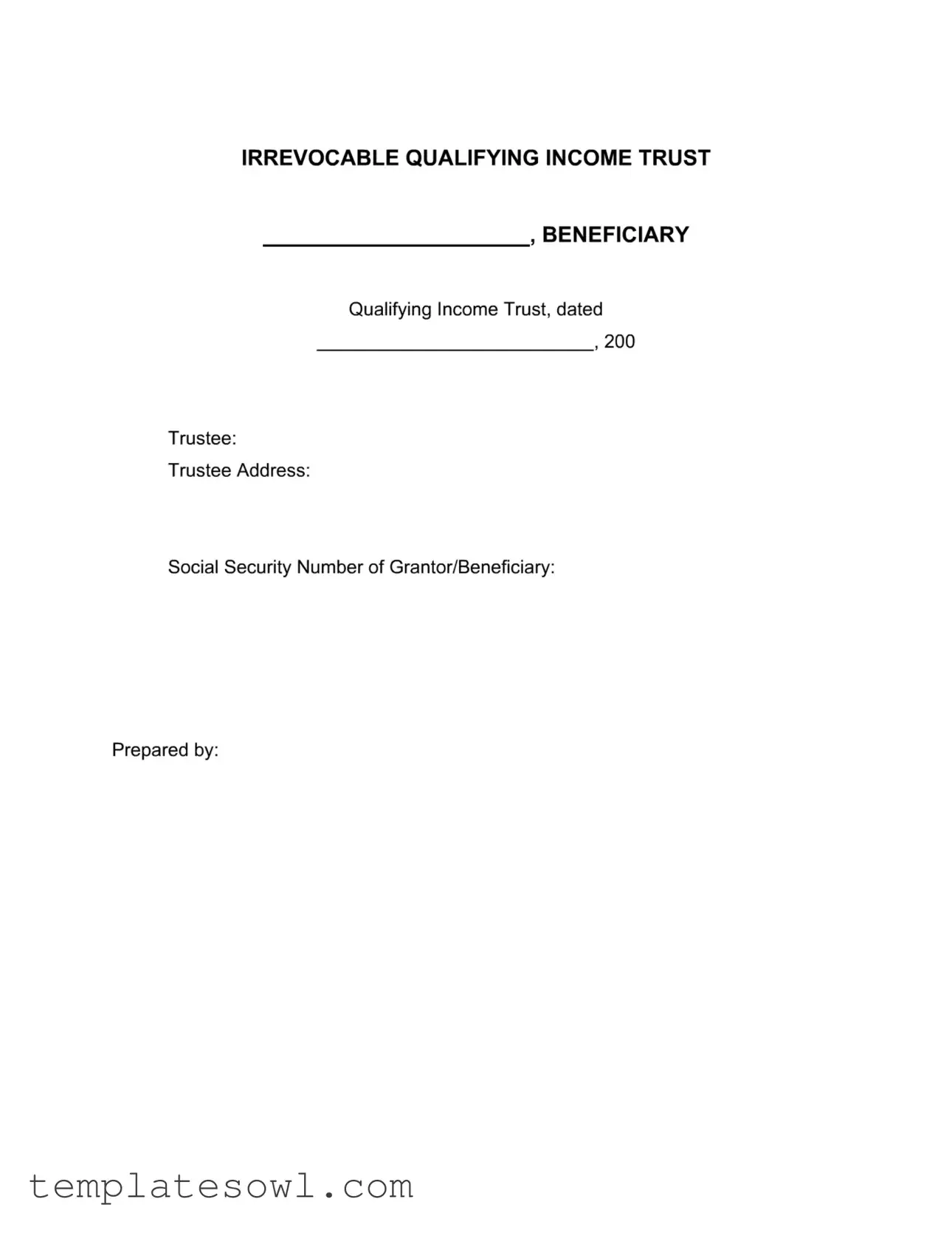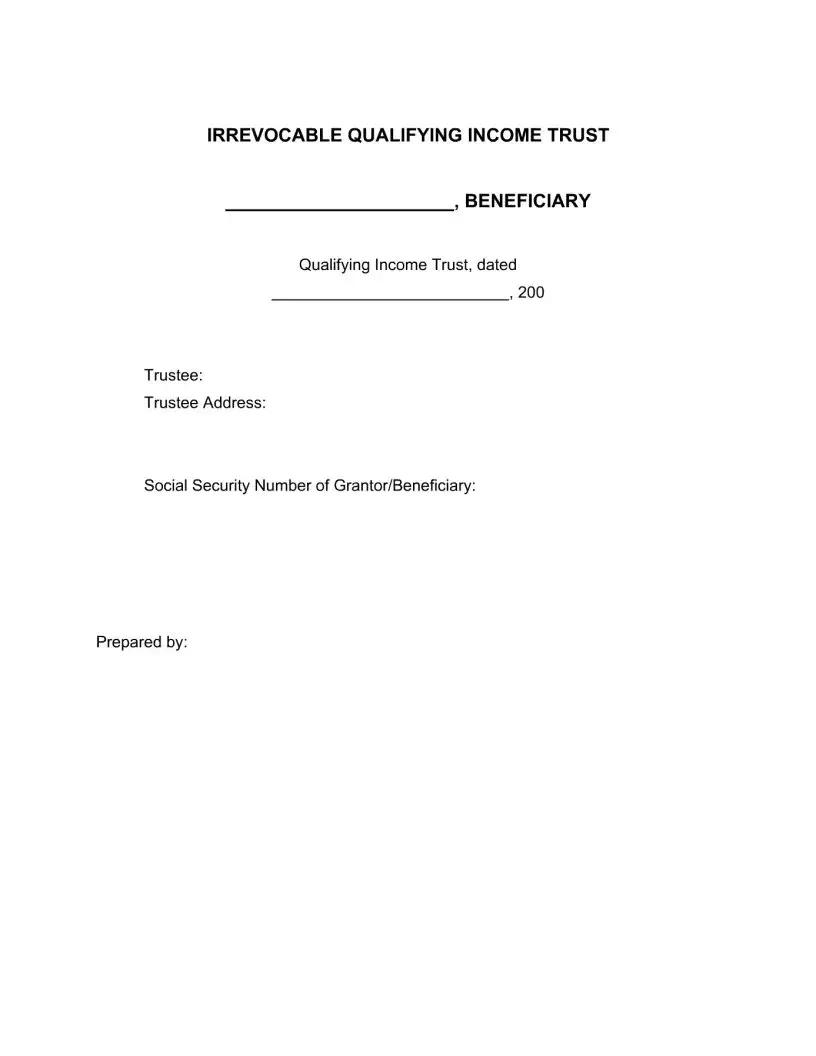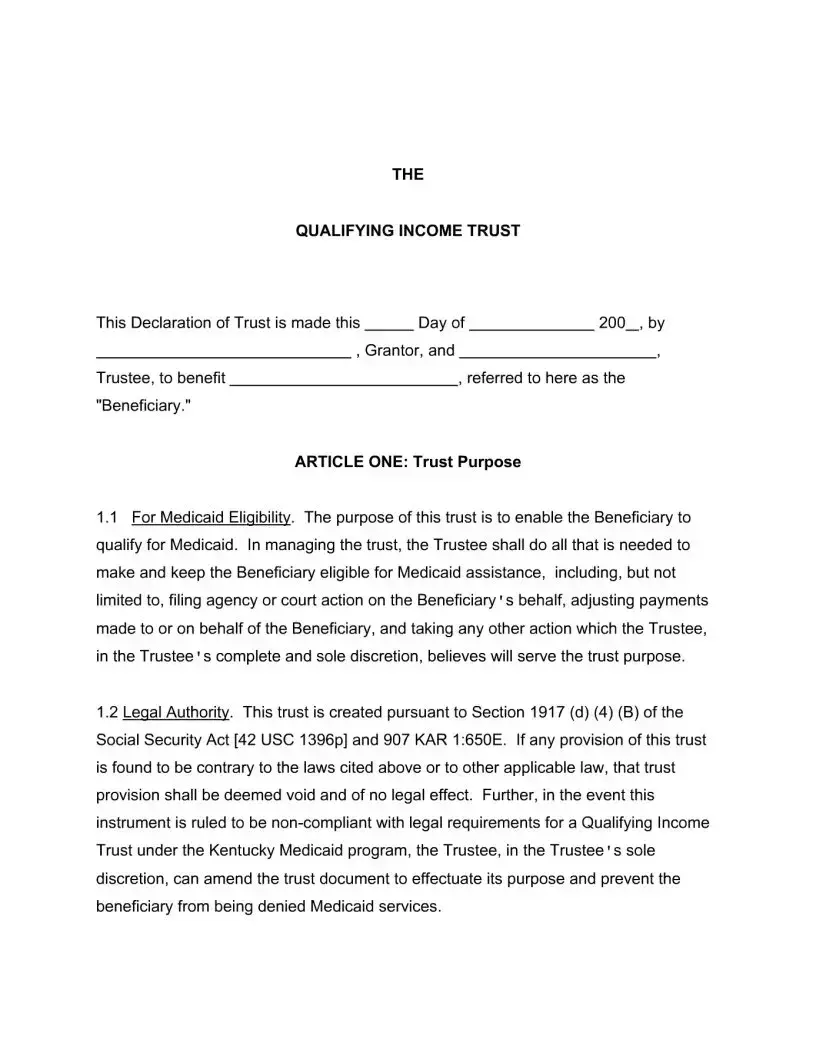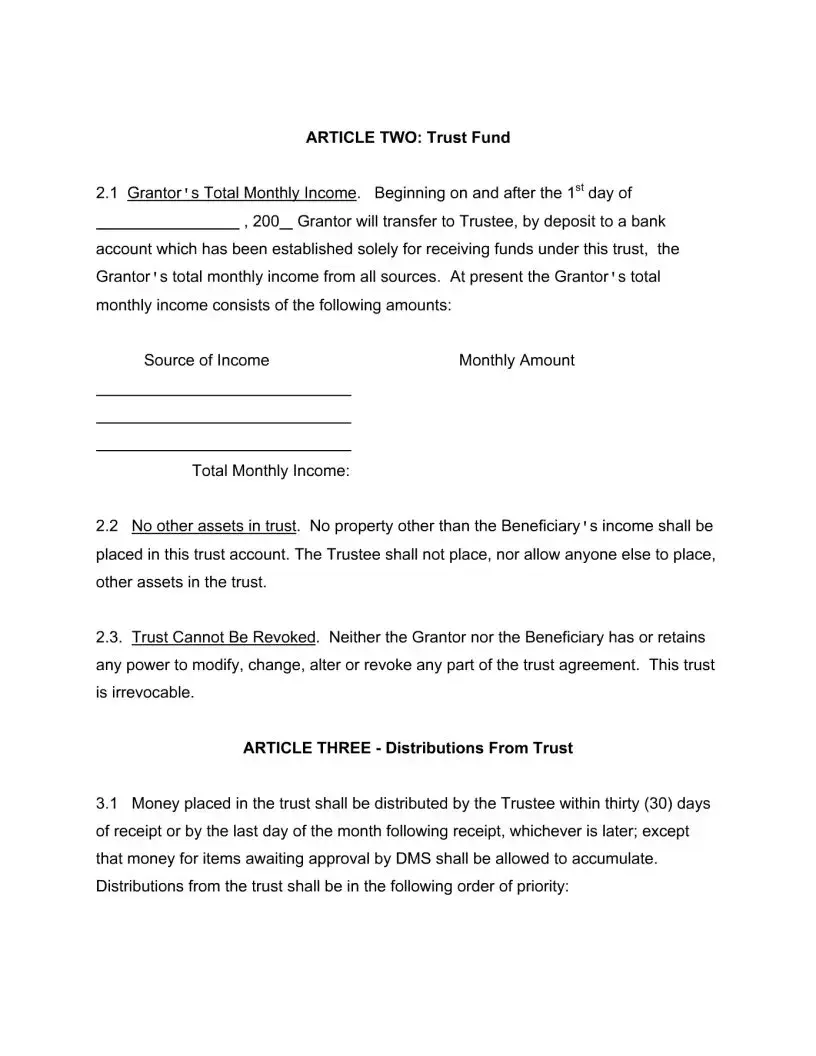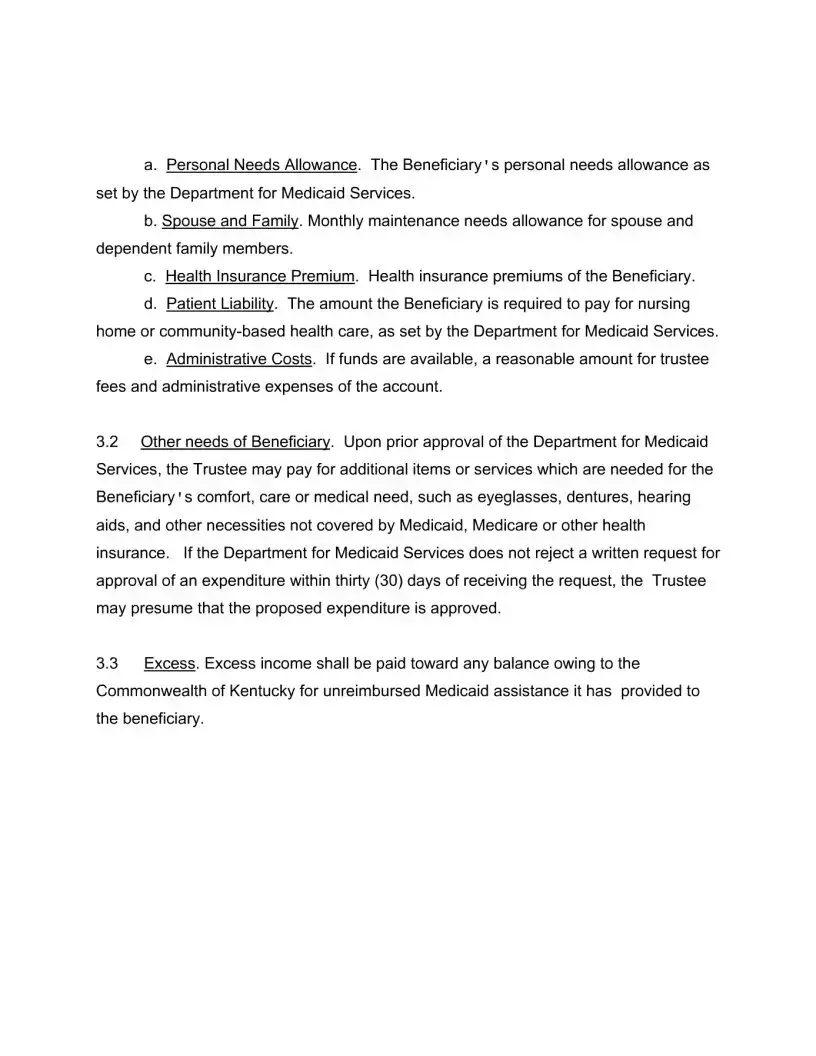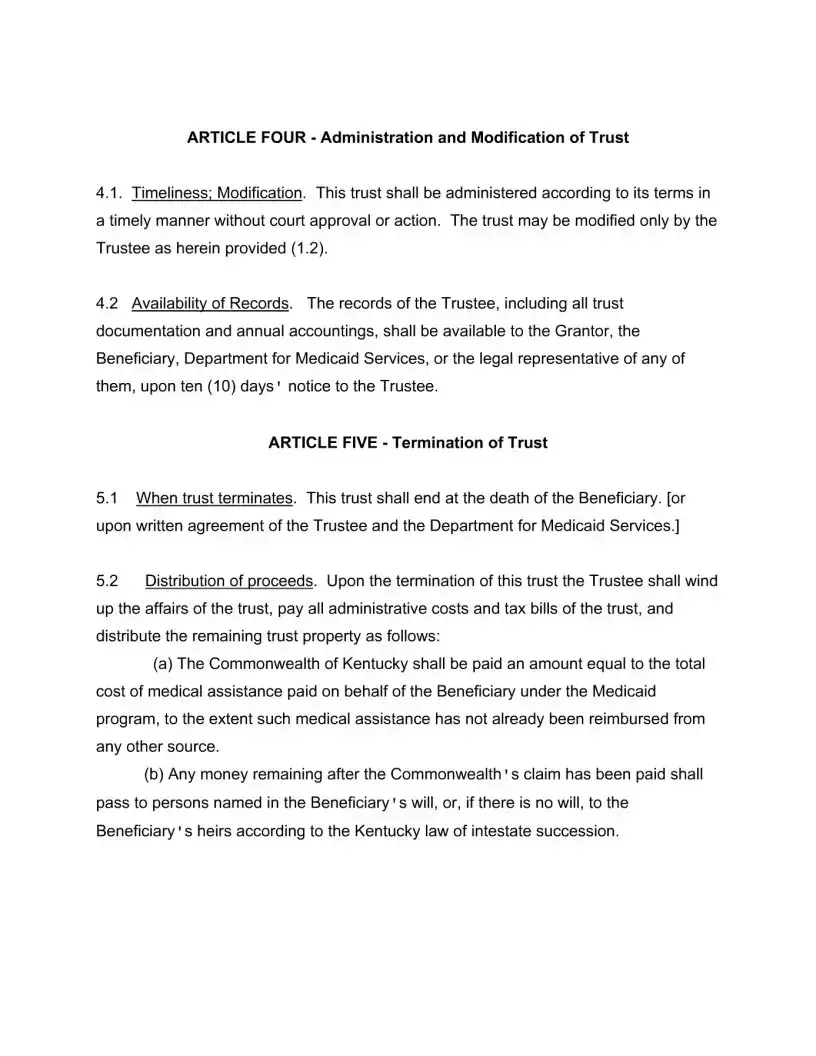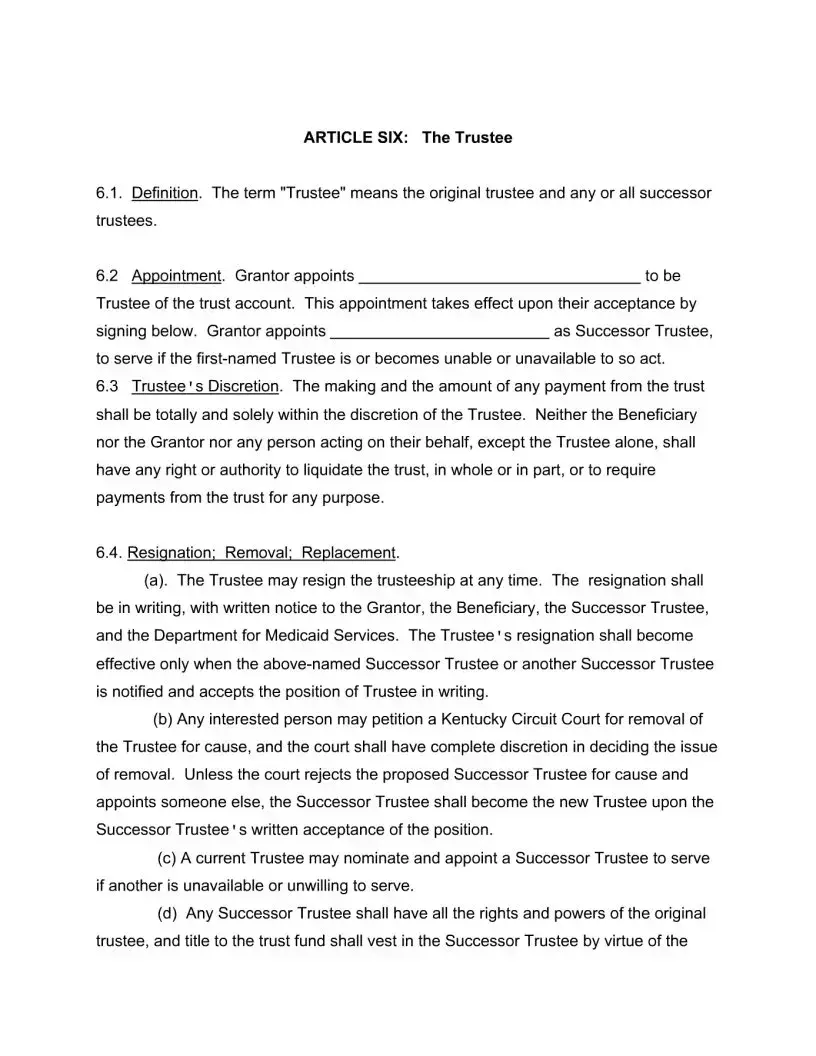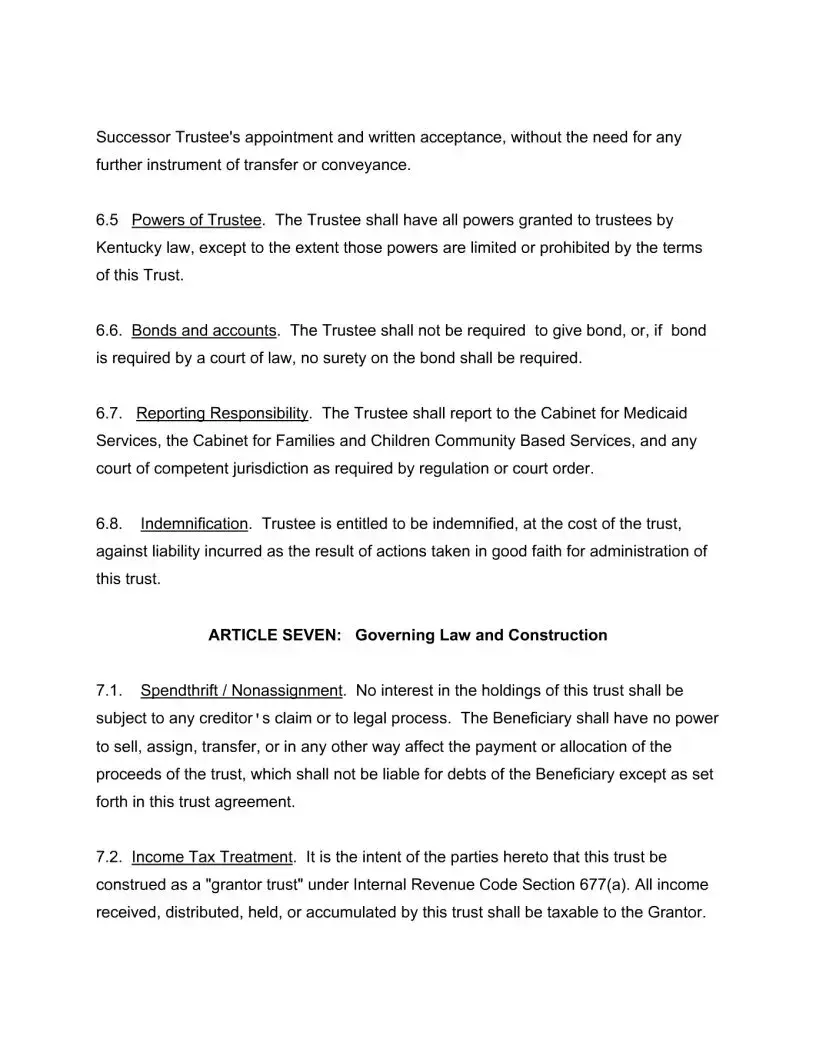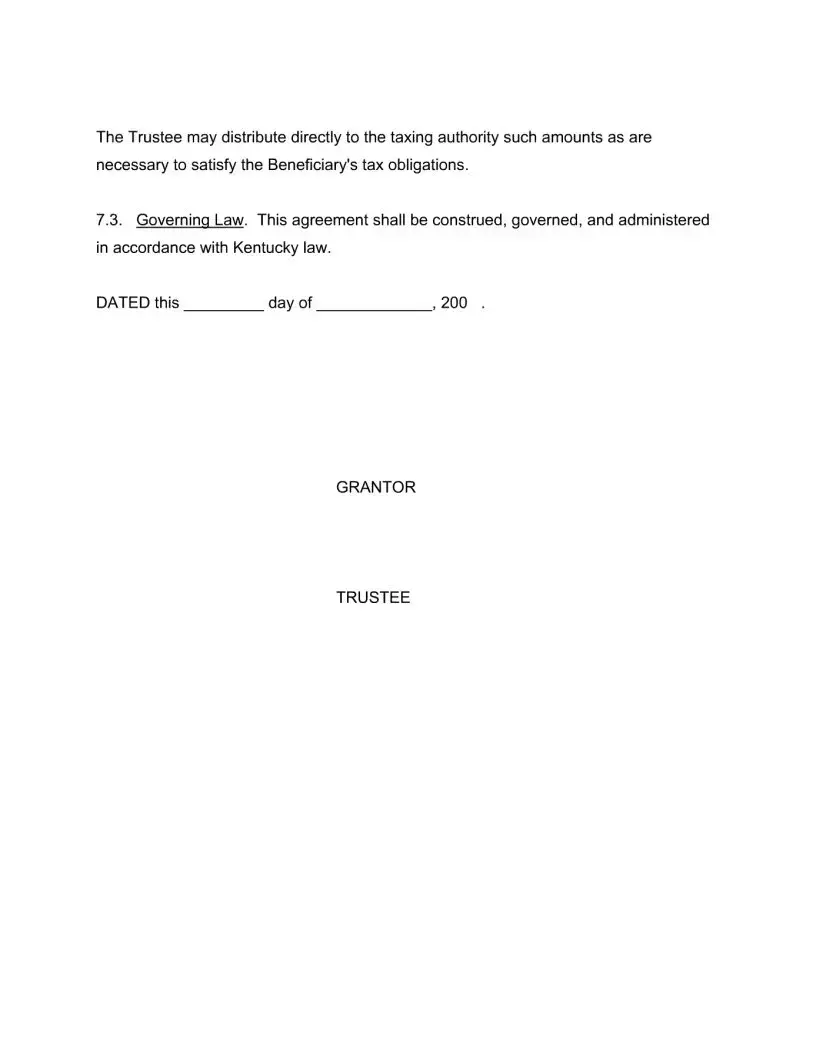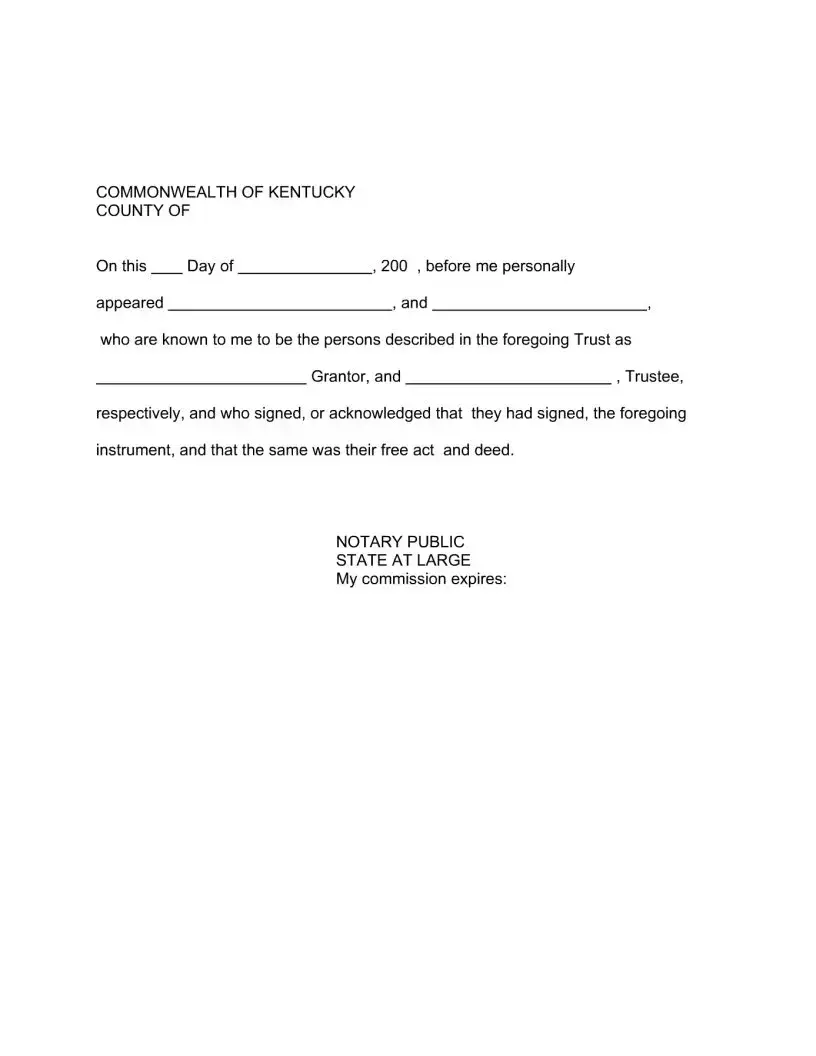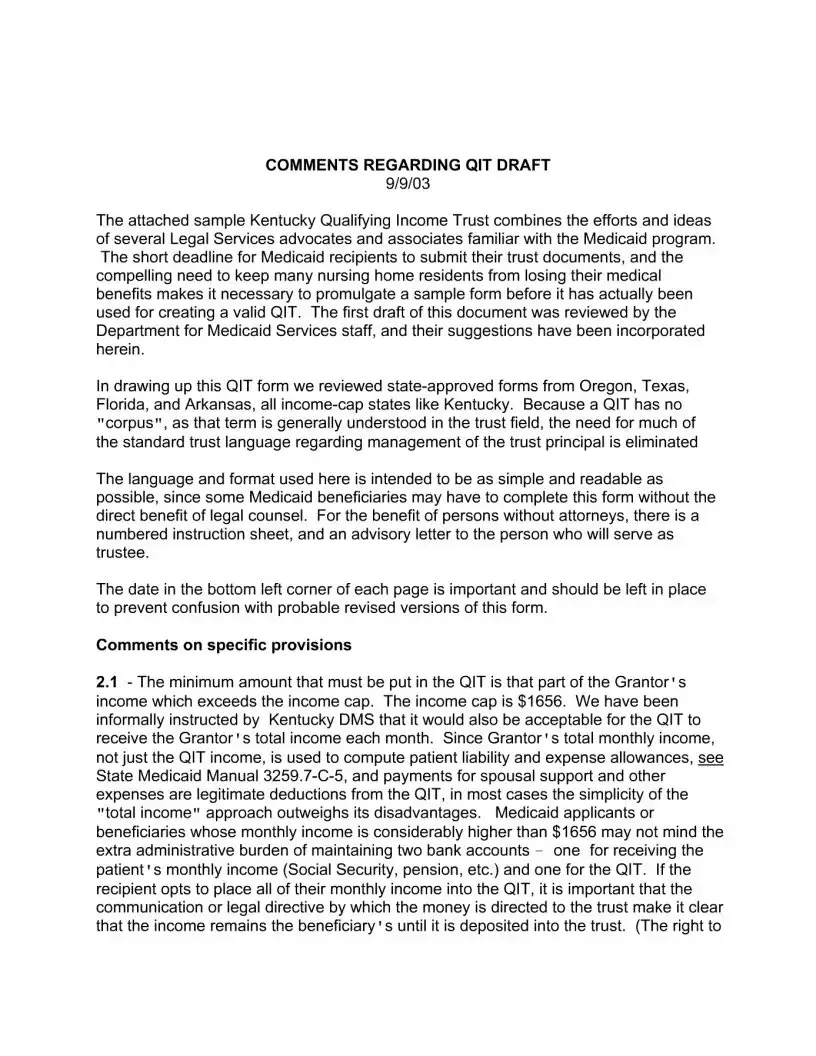What is the main purpose of the Trust Qualified form?
The Trust Qualified form serves to establish a Qualifying Income Trust. Its main purpose is to help individuals qualify for Medicaid assistance. By designating income into this trust, the Trustee can take the necessary steps to ensure that the Beneficiary remains eligible for Medicaid. This includes managing income, filing necessary actions on behalf of the Beneficiary, and maintaining compliance with Medicaid’s rules. The trust is irrevocable, meaning neither the Grantor nor the Beneficiary can modify or revoke it once created.
How is income handled in a Qualifying Income Trust?
Income designated for the Qualifying Income Trust must be deposited into a specific bank account set up solely for this purpose. The Grantor will transfer their total monthly income from all sources into this account. Only the Beneficiary's income should be included; no other assets are permitted in the trust. Additionally, the Trustee must distribute the income within thirty days of receiving it, prioritizing payments for the Beneficiary’s personal needs, family maintenance, health insurance premiums, and any required patient liability for care.
What are the distribution priorities for the funds in the trust?
Distributions from the trust are based on a clear order of priority. First, the Beneficiary's personal needs allowance, as set by the Department for Medicaid Services, is addressed. Next, support for a spouse and dependent family members is funded. Following this, health insurance premiums are paid. The Trustee will then address any patient liability costs that the Beneficiary is responsible for when receiving care. Lastly, if remaining funds are available, the Trustee may allocate reasonable amounts for administrative expenses. This structured approach ensures that the most critical needs are addressed first.
Can the Trustee make additional expenditures for the Beneficiary?
Yes, the Trustee can make additional expenditures, but these require prior approval from the Department for Medicaid Services. This may include necessary items or services such as eyeglasses, dentures, or hearing aids that are not covered by other forms of insurance. If the Department does not respond to a request for approval within thirty days, the Trustee can assume the expenditure is permitted. This allows the trust to address the Beneficiary's comfort and care needs effectively.
